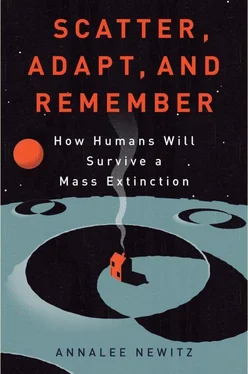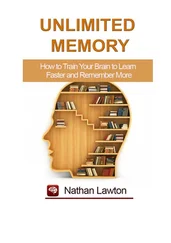1. Stories about how cool it is to rip: Yes, I’m joking a little bit here—I don’t think anybody actually talks about ripping faces off in the Old Testament, but there is a lot of chopping off of various body parts and driving stakes through people’s heads and similarly graphic violence against enemies. In Assyrian cuneiform tablets, which were often erected as ceremonial stelae or monoliths in celebration of various kings, it was standard practice to praise the current leader by recounting all his battle victories. Indeed, we get some of the first historical accounts of the Jewish people in one of these stelae, in the Louvre’s collection. On it, King Sargon talks about how great it was to capture and kill thousands of Jews from the northern kingdom of Israel, called Samaria. It’s important to remember that this kind of writing was part of the style of national monuments of the era, and probably didn’t reflect the common people’s sentiments or even the sentiments of the people writing. They were patriotic documents, intended as propaganda. But it was against the backdrop of this kind of propaganda that Exodus was written and compiled, which makes many aspects of the story quite remarkable.
2. In modern parlance, the term “diaspora”: William Safran, “Diasporas in Modern Societies: Myths of Homeland and Return,” Diaspora: A Journal of Transnational Studies 1 (1991). See also Robin Cohen, Global Diasporas: An Introduction — Second Edition (New York: Routledge, 2008).
3. UC Berkeley archaeologist Carol Redmount: “Bitter Lives: Israel In and Out of Egypt,” from The Oxford History of the Biblical World (Oxford: University of Oxford Press, 1998).
4. But then in the eighth century: Israel Finkelstein and Neil Asher Silberman, The Bible Unearthed: Archaeology’s New Vision of Ancient Israel and the Origin of Its Sacred Texts (New York: The Free Press, 2001).
5. adopting the local language, Aramaic: “Into Exile: From the Assyrian Conquest of Israel to the Fall of Babylon,” Mordechai Cogan, from The Oxford History of the Biblical World (Oxford: University of Oxford Press, 1998).
6. Yehudim, or Jews: Ibid.
7. As geneticist David Goldstein notes in his book: David B. Goldstein, Jacob’s Legacy: A Genetic View of Jewish History (New Haven and London: Yale University Press, 2008).
8. we know from contemporary sources: Leonard Victor Rutgers, “Roman Policy Towards the Jews: Expulsions from the City of Rome During the First Century C.E.,” Classical Antiquity , vol. 13, no. 1 (April 1994): 56–74.
9. Ostrer wanted to know: Personal interview, April 6, 2012.
10. researchers at the Jewish HapMap project scoured their data: See Gil Atzmon, Li Hao, Itsik Pe’er, Christopher Velez, Alexander Pearlman et al., “Abraham’s Children in the Genome Era: Major Jewish Diaspora Populations Comprise Distinct Genetic Clusters with Shared Middle Eastern Ancestry,” The American Journal of Human Genetics 86 (June 11, 2010): 850–59. You can also read Harry Ostrer’s popular account of their work in Legacy: A Genetic History of the Jewish People (Oxford: Oxford University Press, 2012).
11. hints about where people’s ancestors settled in the diaspora: Scientists can even narrow down the time period when different groups likely split up and headed in different directions. Earlier in this book, we talked about how evolutionary biologists tracking the origins of Homo sapiens can trace the divergence of two species by looking at DNA shared between them and assuming a fixed rate of mutation, or change over time. The divergence of two or more haplotypes can be traced the same way. Syrian Jews and Eastern European Jews, for example, share many long strands of DNA. But in the centuries since those two groups split apart, those strands have accumulated a lot of random mutations. Assuming a fixed rate of mutation over time, scientists like Ostrer can estimate that the two groups likely split up roughly 2,500 years ago. And, by looking at the geographical distribution of haplotypes over Europe, some scientists have even started to track migration paths. See W. Y. Yang, J. Novembre, E. Eskin, and E. Halperin, “A Model-Based Approach for Analysis of Spatial Structure in Genetic Data,” Nature Genetics 44 (2012): 725–31.
12. once again sent Jews running: Henry Kamen, The Spanish Inquisition: A Historical Revision (New Haven: Yale University Press, 1999).
13. A group of Portuguese anthropologists: Inês Nogueiro, Licínio Manco, Verónica Gomes, António Amorim, and Leonor Gusmão, “Phylogeographic Analysis of Paternal Lineages in NE Portuguese Jewish Communities,” American Journal of Physical Anthropology 141 (March 2010): 373–81.
14. The Black Atlantic: Modernity and Double-Consciousness: Paul Gilroy, The Black Atlantic (Reissued Edition) (Boston: Harvard University Press, 1993).
CHAPTER ELEVEN: ADAPT: MEET THE TOUGHEST MICROBES IN THE WORLD
1. Its subsequent 3.5-billion-year career: T. N. Taylor and E. L. Taylor, The Biology and Evolution of Fossil Plants (Upper Saddle River, NJ: Prentice Hall, 1993).
2. cyano evolved inside other cells: This account of plant-cell evolution is called endosymbiotic theory, and originated over a century ago. Today it’s fairly widely accepted and is backed by genetic evidence. See, for example, Geoffrey I. McFadden and Giel G. van Dooren, “Evolution: Red Algal Genome Affirms a Common Origin of All Plastids,” Current Biology 14 (July 13, 2004): R514–16.
3. Brett Neilan, a biologist at the University of New South Wales: Personal interview, January 15, 2012.
4. circadian rhythms of light and dark: Hideo Iwasaki and Takao Kondo, “The Current State and Problems of Circadian Clock Studies in Cyanobacteria,” Plant Cell Physiology 41 (2000): 1013–20.
5. ubiquitous and sustainable: At least until the Sun incinerates the Earth in about a billion years.
6. One of these scientists is physicist-turned-biologist Himadri Pakrasi: Personal interviews, January 6 and March 8, 2012.
7. “You know why most plants are green?”: Personal interview, March 9, 2012.
8. Environmental engineer Richard Axelbaum: Personal interview, March 8, 2012.
9. As a result, the only by-products: S. A. Skeen, B. M. Kumfer, and R. L. Axelbaum, “Nitric Oxide Emissions During Coal and Coal/Biomass Combustion Under Air-fired and Oxy-fuel Conditions,” Energy & Fuels 24 (2010): 4144–52.
10. his team made an incredible breakthrough: Anindita Bandyopadhyay, Jana Stöckel, Hongtao Min, Louis A. Sherman, and Himadri B. Pakrasi, “High Rates of Photobiological H2 Production by a Cyanobacterium Under Aerobic Conditions,” Nature Communications 1 (December 14, 2010).
11. Steven Chu has talked about replacing the oil economy: “The Alternative Choice: Steven Chu Wants to Save the World by Transforming Its Largest Industry: Energy,” The Economist (July 2, 2009).
CHAPTER TWELVE: REMEMBER: SWIM SOUTH
1. Charles Melville Scammon wrote about his experiences hunting grays: Charles Melville Scammon, The Marine Mammals of the North-Western Coast of North America (San Francisco: JH Carmany, and New York: Putnam, 1874). Full text available via the Internet Archive at http://archive.org/details/marinemammalsofn00scam.
2. Their brains “sleep”: Most scientists believe that gray whales, like other cetaceans, experience “unihemispheric slow wave sleep,” where only one hemisphere of the brain “sleeps” at a time. Whales also experience little to no REM sleep. See, for example, Oleg I. Lyamin, Paul R. Manger, Sam H. Ridgway, Lev M. Mukhametov, and Jerome M. Siegel, “Cetacean Sleep: An Unusual Form of Mammalian Sleep,” Neuroscience & Biobehavioral Reviews 32 (October 2008): 1451–84.
Читать дальше






![Аннали Ньюиц - Автономность [litres]](/books/424681/annali-nyuic-avtonomnost-litres-thumb.webp)





